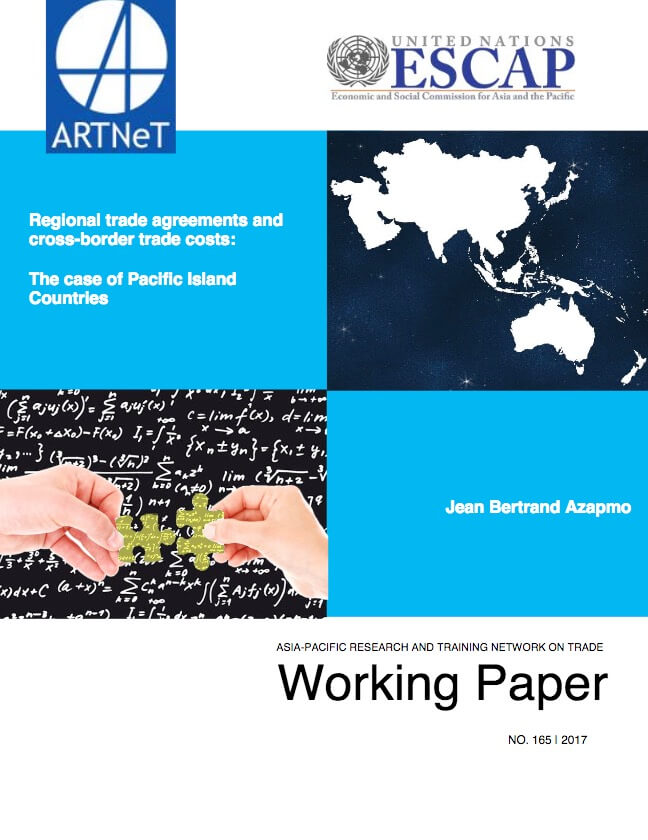Regional trade agreements and cross-border trade costs: The case of Pacific Island Countries

Trade costs matter, in particular for small island developing countries, such as Pacific island Countries (PICs), given their economic size and remoteness from the world markets. This paper examines whether PICs’ performance in cross-border trade costs is informed by the extent of their participation in regional trade agreements (RTAs). The paper begins by analyzing PICs’ membership in five RTAs, focusing on trade facilitation-related provisions committed through those agreements, which have the potential to reduce cross-border trade costs. Applying a New Institutional Economics approach, we can categorize PICs in light of their membership in RTAs; with Tier 1 comprising PICs that are parties to all or four of the five RTAs examined in this paper, followed by Tier 2, and finally Tier 3 with PICs that are parties to less than three RTAs. Next, the paper assesses PICs’ performance in cross-border trade costs using three main indicators (cost, time, and number of documents to export and to import) and data from World Bank Doing Business for 2013-2017. We find that, PICs that are in Tier 1 (except Fiji) do not systematically have lower cross-border trade costs than other PICs. We conclude that whilst RTAs provide a legal framework for improving cross-border trade costs, other factors, such as the nature and scope of trade facilitation-related commitments made by PICs through RTAs and their capacity to implement those commitments, are crucial. Based on these findings, we recommend to review and strengthen trade facilitation-related provisions in existing and future RTAs, to strengthen PICs’ capacity to implement trade facilitation-related measures contained in RTAs, and finally, for PICs to make trade facilitation-related reforms a center element of their national trade policy as well as overall national economic development plan and strategy.
